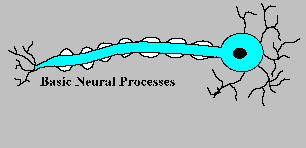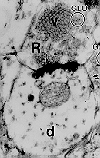



Connections Through Time, Issue 3: April - June 1999
![]()

T
he human nervous system contains roughly 100 billion nerve cells. In the last issue we noted that our Milky Way Galaxy contains roughly 100 billion stars. So, it is worth pausing for a moment to appreciate that each of us is as complex, mysterious and magnificent as any astronomical entity in our wondrous universe.Yes, human beings are a bit smaller than galaxies; however, the Big Bang is our common source. Our consciousness connects us directly to the universe through our nervous system. The nervous system keeps us aware of our environment and allows us to react to it as well as initiate actions. Some of our actions and reactions are conscious and some are performed by our subconscious. How we are able to be conscious of ourselves and our environment, how we are able to think, sing, appreciate art, feel love, contemplate the universe, and perform precognition are among the deeper mysteries of the human nervous system.
Following is a brief summary about the physics of the human nervous system. The figures are linked to their respective references and a couple of online references used in preparing the following information are included for additional details.
The nervous system consists of the central and peripheral nervous systems. The central nervous system includes the spinal cord and the brain. Perception, movement control, learning, memory and other higher neural functions are carried out in the brain. The spinal cord contains the nerves for rhythmic motor behavior, mediates reflexes and conducts sensory information to the brain. The peripheral nervous system is made up of all the nerves that lie outside the brain and spinal cord. The two systems are so intertwined that, in reality, there is one nervous system per person.
Information about the environment is acquired through sensory cells that are specialized to respond to a particular external stimulus. In all cases, the sensory cell generates an electrical signal in response to the stimulus. The basic signaling unit of the nervous system is the nerve cell, or neuron, which comes in many different shapes, sizes and chemical content.
The general layout of a nerve cell (neuron) is roughly as follows: Information via electrochemical signals is received on dendrites and passed on thru an axon. The electrical signal in axons is a brief voltage change called an action potential, or nerve impulse, which can travel long distances, sometimes at high speeds, without changing size or shape. When an action potential arrives at the ends of the axon, it interacts with up to thousands of neighboring cells across synapses. The electrochemical interactions at these synapses modify the intensity of the signals as they pass from cell to cell.
The details of what happens across the synapse is rather complex as indicated in the figure at the left. Human beings have around 100 trillion, or so, synapses! We are indeed complex "electrochemical structures" which likely have enormous capabilities not yet appreciated by most of us. Hey, maybe there are enlightened souls among us - most of us are still on our journeys, however.
 Using the electron microscope, Dr. Pati Irish in the Department of Neurological Surgery at the University of Washington has taken the picture at the right of a synapse. The "d" represents a dendrite and the "R" represents an axon terminal. The black area is the synapse between the terminal of one neuron and dendrite of another.
Using the electron microscope, Dr. Pati Irish in the Department of Neurological Surgery at the University of Washington has taken the picture at the right of a synapse. The "d" represents a dendrite and the "R" represents an axon terminal. The black area is the synapse between the terminal of one neuron and dendrite of another.
The nervous system appears to be influenced by its own neurons-synapses activity and connections. In infants and children, these connections seem to come in an over-abundance for the actual need. If you use a particular pathway, it becomes solidified and stronger, and establishes itself. Pathways that are not used fall away, sometimes permanently. (Use it or lose it to some extent.) One of the latest regions of our brains to stop forming synapses is the prefrontal cortex, the outer region of the brain directly behind your forehead. Here the process of synapse formation goes on into mid-teen years.
There is no doubt that we can continue to improve our brain power later in life. Just as researchers are finding that physical activities help the body stay healthy, mental activities also have great benefit for keeping the nervous system healthy. (Ref.)
![]()
Compiled and Edited by P-I-A. Comments and Questions.